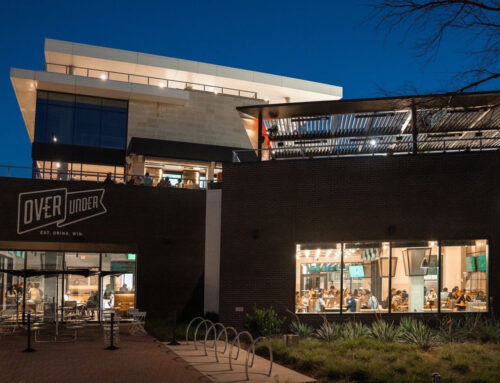Despite an unfavorable Texas Supreme Court ruling, the City and neighborhood organizations continue to seek a legal way to regulate liquor-related businesses.
The City Plan Commission recently approved a proposed ordinance that City attorneys believe falls within the Texas Court’s recent opinion striking down “D-1” (or dry) overlay districts.
The new ordinance, which is based on provisions of the Texas Alcoholic Beverage Code and was implicitly encouraged in the Court’s opinion, would require a Special Use Permit for any City business earning 75 percent or more of its gross revenue from either on-premise or off-premise alcohol sales.
The ordinance would disallow sale of alcoholic beverages if the business was located within 300 feet of a church, public hospital or public school.
Private hospitals and private schools weren’t included because they aren’t included in the state’s enabling legislation, and their inclusion would likely outlaw the ordinance.
The ordinance will be placed on the Council’s June agenda. Council approval is expected, although some have suggested the ordinance apply only to certain areas of the City.
For example, areas may be exempted where alcohol-related businesses aren’t perceived to be a problem, or perhaps entertainment-oriented areas such as Deep Ellum and the West End.
On the other hand, areas such as East Dallas, South Dallas and North Oak Cliff, where neighborhoods have been clamoring for help in dealing with liquor-related issues, would benefit from the ordinance.
Some have begun referring to this new concept as “D-2” and “Son of D-1”.
At first glance, this ordinance may be an acceptable compromise that could help the neighborhoods while withstanding legal challenges.
Unfortunately, whatever the Council approves, look for a legal challenge. I’m sure there will be more to say on this issue next month.
LAKEWOOD PARKING STUDY: Neighborhood volunteers and business owners in and around the Lakewood Shopping Center at Gaston and Abrams roads are trying to get a handle on the shopping center’s traffic issues.
With the successful redevelopment of the center, and especially with the opening of a number of well-regarded and heavily patronized restaurants, parking has become a more acute problem.
If you live near the area or are interested in the process, contact me at 520-2040, and I will put you in touch with those spearheading the effort.
DOWNTOWN INCENTIVES: The Council recently passed a package of incentives designed to spur housing development in Downtown and the surrounding neighborhoods.
Included are tax abatements, sharing of development costs and other financial incentives designed to encourage housing developers to build new projects or convert existing buildings. A recent survey by M/PF Research showed a larger-than-expected market for in-town housing. City officials also believe residential units Downtown are necessary to attract retail back to the area.
In East Dallas, the designated incentive area includes the area west of Carroll to Live Oak, and then zigzags down Haskell to Peak to I-30.
Even for areas not included in this area, it’s assumed that more and better housing in the older section of East Dallas will create higher property values and a better business climate for the rest of East Dallas.
HISTORIC DESIGNATION: The City’s historic preservation staff in the Planning Department continues to study the possibility of designating additional neighborhoods in East Dallas, South Dallas and Oak Cliff as historic districts.
In addition to existing designations for Swiss Avenue and Munger Place, potential areas for designation include the Bryan/Peak commercial district, the Alcalde Street/Crockett School area, and a large area known as Peak’s Suburban Addition.
Peak’s Suburban Addition and the Alcalde Street/Crockett School area have been identified by the National Trust for Historic Preservation as “endangered neighborhoods”. The Trust believes these areas are “endangered neighborhoods” because of high vacancy rates, low housing values, low household income and other similar problems.
City studies indicate the historic district designation has great economic benefit, both to the City and to neighborhood property owners.
For example, within the Swiss Avenue Historic District, average property values from 1973 to 1984 increased by nearly 480 percent.
Smaller but significant value increases were recorded in Munger Place and in Winnetka Heights in Oak Cliff.
The City is offering various preservation incentives and is continuing to work on historic designation for these areas.
DR PEPPER CONTROVERSY: The Dr Pepper building site at Mockingbird Lane and Greenville Avenue was subject to a restraining order at the end of May preventing the FDIC, which owns the property, from selling the site to Dal-Mac Construction until further study is done on the potential “adaptive reuse” of the building.
Dal-Mac indicated an interest in considering “adaptive reuse”, which could allow at least a part of the building to be saved.
The case raises an interesting legal issue: The FDIC claimed that it didn’t have to consider the historic value of the site as part of the sale, even though federal law requires all federal agencies to consider historic issues while selling federal property.
The FDIC apparently is arguing that it isn’t a “federal government agency”, which undoubtedly would come as something of a surprise to members of Congress and their constituents, who have pumped tens of billions of dollars into the FDIC as part of the banking industry bailout.
We’ll try to keep you updated as events unfold.





